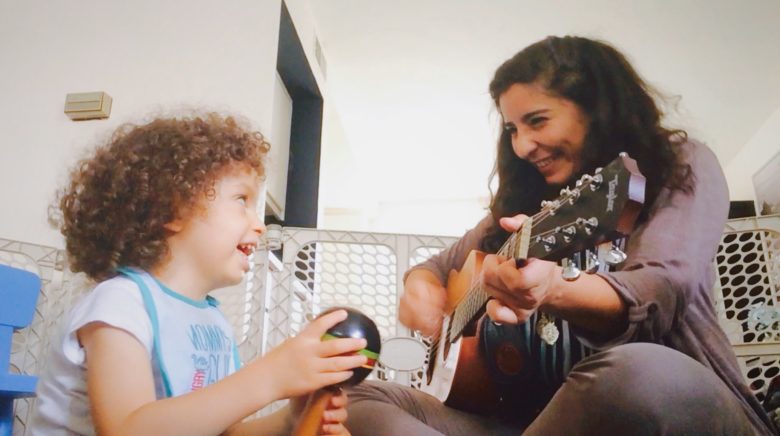
April 11, 2017 | Blogs and News
How To Integrate Music Therapy Exercises Into Your Routine.
Children’s Music Fund (CMF) continually strives to promote the powerful ways that music therapy can help heal. What most people don’t realize is that you can adapt these therapeutic exercises to your daily routine, as a means of stress-relief and meditation. The American Music Therapy Association notes that music therapy targets seven treatment goals: overall wellness, stress management, expression of feelings, communication, improvement of memory, and physical rehabilitation. There are many ways to use music to treat wellness goals, including the following simple practices suggested by our own network of board-certified music therapists.
As our Founder and President, Dr. Raffi Tachdjian notes, “Music therapy provides that reassurance, self-acceptance, and empowerment of the developing personality. With proper and adequate use of music therapy, [patients] can achieve great heights in the physical, psychological, and social aspects of his or her daily life.” Music therapy is both a healthful practice and an invigorating experience, which helps anyone cope with their problems through the power of musical engagement and performance.
Music therapy is also an excellent means of self-expression and discovery, especially for youth. “Often teens have difficulty expressing their emotions verbally, and lyrics can help them to find the right words to express and relate to their emotions,” states music therapist Brooke Sinang. “Many times I hear adolescents say that they can relate to music that is dark, depressing or angry. It can be extremely validating and therapeutic for teens to be able to process these emotions and learn more about themselves in order to effectively change.”
For these adolescents, music provides them with a means of communicating their emotions, at a point in their life when feelings are confusing and generally unarticulated. By finding and listening to music that mirrors one’s emotions, music therapy becomes a comfortable way of working out problems and discovering one’s passions.
There are other simple ways of integrating effective music therapy techniques into your daily regimen. As an accessible daily practice, CMF Music Therapy Coordinator, Jessica Brizuela MT-BC, suggests using lyrical interpretation as a stress-relieving tool.
In one example, she notes a contemporary song that serves as a great therapeutic exercise — Stressed Out by the duo Twenty-One Pilots: “It is great for teens to relate to as it lists all the worries in the verses, then the chorus validates those stressed feelings: wish we could turn back time to the good old days when our mommas sang us to sleep but now we’re stressed out. Teens can integrate music therapy techniques by creating their own lyrics (lyric substitution) to the verses, writing out their worries. Sometimes, it’s good to just let them out — writing or saying it so that they are not left inside.” It’s amazing how these exercises can prove so incredibly beneficial in helping patients self-sooth.
Music therapy has incredible effects, not just on individuals, but on their surrounding community as well. Our founder puts it best: “The power of music therapy can be used as a tremendous positive impact for teenagers, their families and friends, and society in general. Their story building (imagery) through music therapy becomes their voice and their words. Their musical instrument delivers the notes and lyrics that make up that story that needs to be communicated: Therein lies the therapy.”
Music is a cultural process, and by helping chronically-ill children heal and express themselves through music-making, music therapy helps improve the community one child at a time. Help us on our mission of healing through music by donating or volunteering today. Visit www.theCMF.org for more information.
